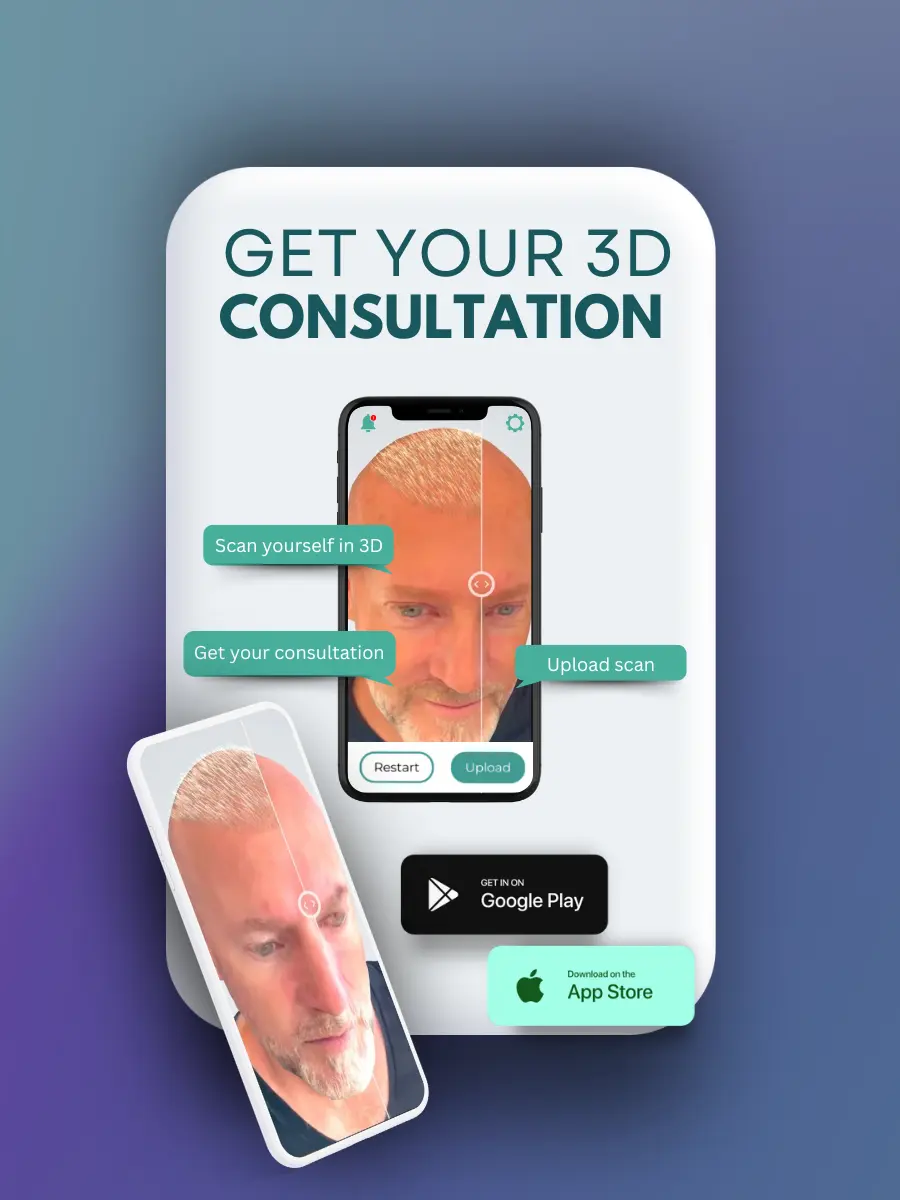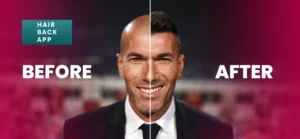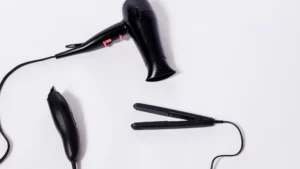For individuals undergoing a hair transplant, the anticipation of a transformed appearance often comes hand in hand with a pressing concern: how to sleep after a hair transplant.?
Indeed, one of the foremost things transplant patients worry about after FUE hair transplant is whether sleeping positions will inadvertently cause discomfort or compromise the success of the procedure. After all, ensuring proper rest and comfort post-procedure is not just about feeling well-rested; it directly impacts the success of the transplant itself.
My name is Emma Wright, your resident hair restoration specialist. In this guide, we’ll delve into the intricacies of sleeping after a hair transplant, offering insights and practical tips to help you navigate this essential aspect of your recovery journey.
From finding the right sleeping position to understanding when it’s safe to resume normal sleeping habits, we’ll address the common concerns and uncertainties surrounding sleep post-transplant.
Additionally, we’ll explore how to protect the donor area during sleep and provide tips for managing discomfort and promoting relaxation for better sleep quality. So, if you’re ready to embark on your hair restoration journey fully prepared, let’s dive in and uncover the secrets to mastering sleep after a hair transplant.
Transition Period: Adjusting Your Sleep Routine
Immediately following a hair transplant procedure, it’s essential to make adjustments to your typical sleep routine to ensure optimal healing and minimize discomfort. During this transition period, certain sleeping positions should be avoided to prevent inadvertently disturbing the newly transplanted follicles and causing unnecessary strain on the scalp.
- Avoid Pressure on the Transplant Area: In the initial days post-transplant, it’s crucial to avoid sleeping directly on the transplant area. Pressure on the grafts can disrupt their placement and compromise their ability to take root. Instead, opt for sleeping positions that minimize contact with the transplant site, such as sleeping on your back with your head elevated.
- Elevate Your Head: Elevating your head slightly with extra pillows or a wedge pillow can help reduce swelling and discomfort. By keeping your head elevated above your heart, you can promote better blood circulation to the scalp and minimize post-operative swelling.
- Gradual Transition: While it may be tempting to resume your normal sleeping habits immediately, it’s essential to make a gradual transition back to your usual sleep routine. Start by experimenting with different sleeping positions that minimize pressure on the transplant area while still allowing you to rest comfortably.
- Listen to Your Body: Pay close attention to how your body responds to different sleeping positions and adjust accordingly. If you experience any discomfort or pain while sleeping, it’s essential to modify your position to alleviate pressure on the transplant area and promote better healing.
How Many Days After Hair Transplant Can I Sleep Normally?
How many days after a hair transplant can you sleep normally? It’s a common question among individuals undergoing this transformative procedure. While the timeline may vary depending on individual factors such as the type of transplant performed and the rate of healing, most patients can typically resume their normal sleeping patterns within a few days to a week post-procedure.
During the initial days following the hair transplant, it’s essential to prioritize rest and ensure that you’re taking the necessary precautions to protect the newly transplanted grafts. This may involve sleeping in a slightly elevated position to minimize swelling and avoiding sleeping directly on the transplant area to prevent disruption of the grafts.
As your recovery progresses and any initial discomfort subsides, you’ll gradually be able to transition back to your usual sleeping habits. However, it’s crucial to listen to your body and avoid putting undue pressure on the transplant area until it has fully healed.
Your surgeon will provide specific guidelines and recommendations based on your individual circumstances to ensure a smooth and successful recovery process.
Ultimately, the goal is to achieve a balance between rest and protection of the transplant area, allowing you to sleep comfortably while promoting optimal healing and long-term results. If you have any concerns or questions about resuming normal sleeping patterns after your hair transplant, don’t hesitate to consult with your surgeon for personalized guidance and support.
How Long to Sleep with Neck Pillow After Hair Transplant
The duration for which you should sleep with a neck pillow after a hair transplant can vary depending on individual factors such as the type of procedure performed and your surgeon’s recommendations.
However, a common guideline is to use a neck pillow for approximately 7 to 10 days post-transplant, or as advised by your surgeon.
Using a neck pillow serves several purposes during the initial stages of recovery:
- Support and Comfort: A neck pillow provides added support and comfort, especially if you need to sleep in a semi-upright position to minimize swelling or if you’re advised to avoid putting direct pressure on the transplant area.
- Protection: Using a neck pillow can help prevent accidental pressure on the transplant area or the donor site, reducing the risk of damaging the newly transplanted grafts or causing discomfort.
- Stability: By using a neck pillow, you can maintain stability and alignment of your head and neck while sleeping, which is particularly important during the early stages of healing when the scalp may be tender or sensitive.
It’s essential to follow your surgeon’s specific instructions regarding the use of a neck pillow after your hair transplant. They will provide personalized guidance based on your individual circumstances and the specifics of your procedure to ensure a smooth and successful recovery.
If you experience any discomfort or have concerns about using a neck pillow after your hair transplant, be sure to communicate with your surgeon promptly. They can address any questions or issues you may have and provide additional support to help you navigate the recovery process effectively.
Sleeping on Donor Area After Hair Transplant
Sleeping on the donor area after a hair transplant, particularly if you’ve undergone a follicular unit extraction (FUE) procedure, requires careful consideration and attention to ensure optimal healing and comfort.
The donor area is where hair follicles are harvested for transplantation, and it’s essential to protect this area during sleep to prevent any complications or discomfort.

Here are some tips for sleeping on the donor area after a hair transplant:
- Avoid Direct Pressure: One of the primary goals is to avoid putting direct pressure on the donor area while sleeping. This can be achieved by avoiding sleeping directly on your back or sides, as these positions can exert pressure on the area.
- Use Soft Pillows: Opt for soft pillows or cushions to support your head and neck while sleeping. Placing a pillow under your head and neck can help distribute your weight more evenly and reduce pressure on the donor area.
- Sleep on Your Stomach or Elevated Position: Sleeping on your stomach can be a comfortable alternative that minimizes pressure on the donor area. Alternatively, if you’re comfortable, sleeping in a slightly elevated position with your head and upper body elevated can also help reduce pressure on the donor area.
- Be Mindful of Movement: During sleep, it’s natural to change positions multiple times. Be mindful of your movements and try to avoid any sudden or jerky movements that could potentially disturb the donor area.
- Follow Post-Operative Instructions: Your surgeon will provide specific post-operative instructions regarding sleeping positions and care for the donor area. It’s essential to follow these instructions carefully to promote optimal healing and minimize the risk of complications.
- Monitor for Discomfort: Pay attention to any discomfort or pain in the donor area while sleeping. If you experience significant discomfort or notice any signs of irritation, such as redness or swelling, adjust your sleeping position accordingly and consult with your surgeon if necessary.
Tips for Better Sleep After a Hair Transplant
Ensuring a good night’s sleep is essential for the body’s healing process and overall well-being, especially after a hair transplant procedure. Here are some tips for better sleep after a hair transplant:
- Elevate Your Head: Use extra pillows or a wedge pillow to elevate your head while sleeping. This can help reduce swelling and discomfort, particularly in the first few days after the procedure.
- Create a Comfortable Environment: Make your bedroom conducive to sleep by ensuring it’s dark, quiet, and at a comfortable temperature. Consider using blackout curtains, white noise machines, or earplugs to block out any distractions.
- Follow Post-Operative Instructions: Your surgeon will provide specific post-operative instructions regarding sleep and recovery. Follow these instructions carefully, including any recommendations for sleeping positions and care for the transplanted area.
- Avoid Strenuous Activities Before Bed: Engage in relaxing activities before bedtime to help prepare your body for sleep. Avoid vigorous exercise, heavy meals, and stimulants like caffeine or alcohol, as these can interfere with your ability to fall asleep.
- Manage Discomfort: If you experience discomfort or pain, take any prescribed pain medication as directed by your surgeon. Additionally, applying cold compresses to the forehead or taking a warm bath before bed can help alleviate discomfort and promote relaxation.
- Practice Relaxation Techniques: Incorporate relaxation techniques such as deep breathing, meditation, or progressive muscle relaxation into your bedtime routine to help calm your mind and body before sleep.
- Stay Hydrated: Drink plenty of water throughout the day to stay hydrated, but be mindful of your fluid intake closer to bedtime to avoid disruptions from frequent trips to the bathroom.
- Limit Screen Time: Avoid using electronic devices such as smartphones, tablets, or computers before bedtime, as the blue light emitted from these devices can interfere with your body’s natural sleep-wake cycle.
- Establish a Bedtime Routine: Develop a consistent bedtime routine to signal to your body that it’s time to wind down and prepare for sleep. This could include activities such as reading, taking a warm bath, or practicing gentle stretching exercises.
- Be Patient: It’s normal to experience some difficulty sleeping or discomfort in the days following a hair transplant procedure. Be patient with yourself and give your body time to adjust and heal.
Conclusion
In conclusion, mastering the art of sleep after a hair transplant is crucial for ensuring optimal healing and maximizing the results of the procedure. By following the tips and strategies outlined in this guide, you can create a conducive environment for restful sleep and support your body’s recovery process.
From elevating your head to avoid swelling, to following hair transplant aftercare instructions provided by your surgeon, to implementing relaxation techniques before bedtime, each step plays a vital role in promoting better sleep quality and overall well-being during the recovery period.
Remember to be patient with yourself as you navigate this phase of your hair restoration journey. Healing takes time, and prioritizing self-care, including adequate sleep, will ultimately contribute to the success of your hair transplant procedure.
If you have any concerns or questions about sleeping after your hair transplant, don’t hesitate to reach out to your surgeon for personalized guidance and support. With the right approach and proper care, you can rest assured that you’re on the path to achieving the results you desire and waking up to a brighter, more confident tomorrow.














